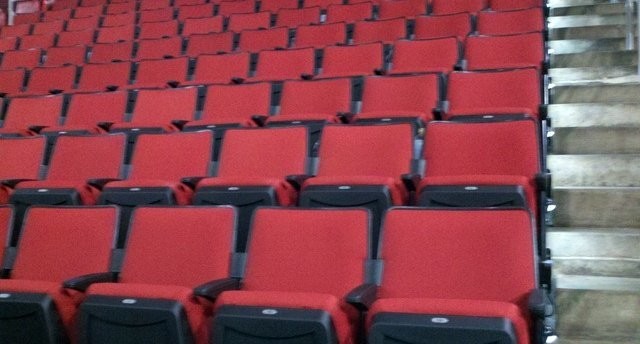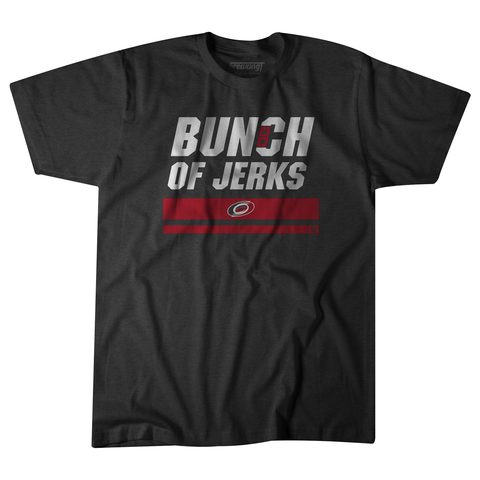
Two years ago, I attended a Carolina Hurricanes game. While sitting in the lower level, I took a look around and snapped this picture on my phone.

This was a National Hockey League game between the Hurricanes and Buffalo Sabres on a Friday night in Raleigh, North Carolina, and the number of empty seats was staggering. That night, I went home and wrote a blog I posted on LinkedIn called, “How to Fix the Carolina Hurricanes.” I made reference to some special moments I had in radio during the team’s Stanley Cup run a decade earlier.
Fixing hockey teams is not my domain. That’s for hockey experts to figure out. What I felt that night was a troubling trend indicative of a team bordering on irrelevance in my town. Somehow, some way, my team had to fix the Carolina Hurricanes experience. History shows us that the Carolina Hurricanes experience is not the Detroit Red Wings experience nor the Toronto Maple Leafs experience. The Carolina Hurricanes experience, at its best, is unlike any other in the NHL. It is not an experience you can plop into any other city. And that’s exactly what makes it special.
Central North Carolina is college basketball country. Early on in the Hurricanes’ existence in Raleigh (the team moved here from Hartford in 1997), it became apparent that fans liked bringing some of that college sports vibe to their hockey. That included things like air horns in the arena. Tailgating and day-long barbeques in the parking lot. A pig for a mascot.
Over the years, the bloom faded from the rose. There were fewer tailgates, fewer air horns and fewer people.
The Hurricanes haven’t made the playoffs since 2009, and Captain Obvious would probably say that winning fixes everything.
And that would generally be true.
But it’s also fair to expect the Hurricanes to have up- and down-swings like every other team in every other sport, and the franchise can’t rely solely on winning alone for long-term success. There has to be an experience that attracts the fans. In that blog two years ago, there was one line I wrote and typed in bold for emphasis:
A team in a non-traditional hockey market requires non-traditional marketing.
Dallas billionaire Tom Dundon, primary investor of TopGolf, took over ownership of the team in January 2018, and change was in the air quickly. There was the game during which fans in the upper level had their seats upgraded to the lower level. There was a Twitter-only giveaway. And most of all, there is the Storm Surge.
The Storm Surge is a victory celebration, during which the Hurricanes players line up and start a Viking clap over their heads. This is followed by a different type of celebration every night. The players have slid down the ice knocking over players posing as bowling pins. They’ve played Duck Duck Goose. They’ve done a limbo line. And recently, guest Storm Surge participant Evander Holyfield walked out on the ice to deliver a faux-knockout of Hurricanes center Jordan Martinook. Martinook fell perfectly to the ice and was promptly dragged off by teammates Justin Williams and Michael Ferland.
Hockey traditionalists hate the Storm Surge.
A few weeks back, iconic hockey commentator Don Cherry railed the team over their childish celebrations, calling the Carolina Hurricanes a “bunch of jerks.”
The next day, the team was getting “Bunch of Jerks” t-shirts printed and ready for sale.

The next Storm Surge featured a brand new “Bunch of Jerks” logo projected on the ice.
Non-traditional marketing has returned to a non-traditional team.
The Carolina Hurricanes organization just provided a road map for your local radio station’s branding and marketing strategy. While this is a sports story, it is applicable to every station in every format in every city.
- YOUR RADIO STATION SHOULD NOT SOUND LIKE ANY OTHER STATION ON THE PLANET.
The Hurricanes have re-established a non-traditional identity. Like the tailgates and air horns that preceded them, the current Storm-Surging Canes are fun and a little bit out there for the hockey world. The fact that it wouldn’t work elsewhere is what makes it special. While your radio station is likely influenced by others, make the station’s identity uniquely reflective of your audience and your city.
- GET YOUR TEAM’S BUY-IN.
On Limbo Surge night, team captain Justin Williams sent a group text to media relations and team services asking if “Limbo Rock” by Chubby Checker could be played in the arena (even providing the link to listen and download.)
If Hurricanes executives said to the team, “Hey guys, the next night, here’s what your Storm Surge is going to look like,” do you think that would be as effective?
The Storm Surge works because it goes bottom up, not top down. When your talent is invested in the mission and given freedom to contribute, you’re more likely to get magical results—just as when players are invested.
- MOTIVATION IS A POWERFUL TOOL.
The Evander Holyfield Storm Surge obviously took some planning. They made a special jersey with 4X on the back (to acknowledge he’s a four-time heavyweight champion). It’s not like the Hurricanes were playing a cellar-dwelling team. They were taking on the St. Louis Blues, a team that had just set a franchise record for consecutive wins (11) a week earlier. The Canes don’t do Storm Surges when they lose, so it would be a real bummer to put forth all that effort for Holyfield just to lose the game.
But they didn’t lose the game.
You can just imagine how much the players, knowing how awesome a celebration lurked around the corner, wanted to beat the Blues so they could watch Evander Holyfield knock out their teammate.
People love having something to work towards. What tangible goals can you set at your radio station that will result in celebration?
- BE READY TO REACT TO BE AWESOME.
We can’t plan everything. What we can do is stay alert and always be prepared to pivot. The Hurricanes didn’t know Don Cherry would call their team a bunch of jerks. And they could have very easily only done a social media post about it. Or nothing at all. But coordinated mobilization happened quickly, from logo design to printing to social media to interviews.
Your radio station will have many opportunities to be awesome that you don’t know about yet. Don’t miss the opportunities when they arise.
- FUN, FUN AND MORE FUN.
Hockey is a business. Radio is a business. In both, it’s easy to get caught up in the business side of it. But if you’re in hockey, you started playing because of the unbridled joy you felt on the ice. If you’re in radio, you got in because of the unbridled joy you felt, whether behind the microphone or on the streets.
Winning may be fixing things for the Hurricanes, but you can also make the case that the fun brought the winning.
One of my former program directors, Casey Keating, liked to say, “The station that wins in the hallways wins on the air.”
See? Works in radio, too.

Excellent read. Thank you.
Thanks for the kind words, Mark!
Here, here! I love this article! Anybody else ever get the feeling that “we’re playing at radio?” Let’s FIX that!
Thanks, Geno! So glad you enjoyed it!
What a great parallel. It opens eyes to see what other tactics are used by organizations to promote and market themselves. To connect it with hockey was brilliant.
Thanks, Bill!